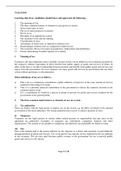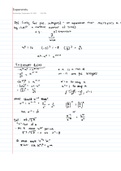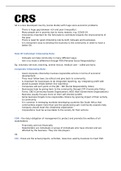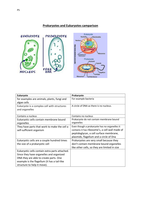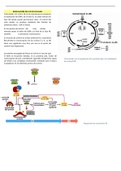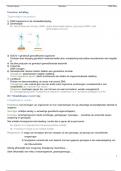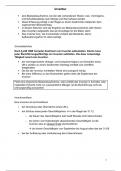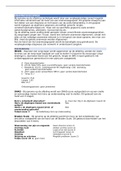Introduction
Intussusception is a paediatric surgical emergency that occurs when a section of the bowel
telescopes into its neighbouring distal section, causing bowel obstruction. The most common
site is the ileocaecal valve (ileocolic intussusception).1,2
If left untreated, intussusception can result in serious complications including bowel necrosis,
perforation and peritonitis.
You might also be interested in our surgical flashcard collection which contains over 800
flashcards that cover key surgical topics.
Aetiology
In most cases of intussusception, there is no clear cause. It can be associated with a
preceding viral infection and may occur due to an enlarged Peyer’s patch acting as a ‘lead
point’, facilitating the telescoping of the ileum through the ileocaecal valve.3
Around 10% of cases occur due to the presence of a pathological lead point. This is an
abnormal area in the bowel which is caught and pulled by peristalsis, thus leading the
intussusception.2
Intussusception due to a pathological lead point is more likely in patients presenting outside the
typical age range or where intussusception occurs away from the ileocaecal valve.
Examples of pathological lead points and other secondary causes of intussusception include:4
● Meckel’s diverticula (and other congenital bowel defects)
● Intestinal polys
● Lymphomas and leukaemias
● Henoch-Schonlein purpura (HSP)
Figure 1. Intussusception occurs when a
segment of bowel telescopes into its distal neighbouring segment.
, Risk factors
Intussusception most frequently occurs in children aged four to eighteen months and is
slightly more common in boys.1
Clinical features
History
The typical triad of symptoms of intussusception include:2
● Intermittent, severe abdominal pain: may present as screaming episodes during which
the child is inconsolable and draws their knees up to their chest. The child may appear
well between episodes but will become more lethargic over time as dehydration
worsens.
● Vomiting: becomes bilious in later stages when bowel obstruction occurs
● Redcurrant jelly stool: a late feature that occurs when ischaemic mucosal tissue is
sloughed off and is excreted in the stool, mixed with blood and mucus (it is a rare
presenting feature).
In clinical practice, only one-third of patients present with all three of these symptoms. Other
symptoms may include lethargy or episodes of pain with odd posturing which may be
mistaken for seizure activity.4,5
Other important areas to cover in the history include:
● Birth and developmental history: including antenatal scans and neonatal problems
● Systemic enquiry: to identify cases where there is an underlying secondary cause, such
as HSP
Clinical examination
An ABCDE approach should be adopted in order to quickly identify the unwell, dehydrated
child who requires early resuscitation. This type of systematic examination is also important to
identify signs of an underlying cause of intussusception.
Observation is an important part of the initial clinical assessment. Typical findings on observing
the child may include:
● Signs of dehydration, such as sunken eyes and dry lips
● Episodes of screaming +/- drawing knees up to their chest
● Lethargy or excessive sleepiness
● Rashes or other features of secondary causes
The hallmark sign of intussusception is a sausage-shaped mass palpable in the right upper
quadrant of the abdomen.2
Intussusception is a paediatric surgical emergency that occurs when a section of the bowel
telescopes into its neighbouring distal section, causing bowel obstruction. The most common
site is the ileocaecal valve (ileocolic intussusception).1,2
If left untreated, intussusception can result in serious complications including bowel necrosis,
perforation and peritonitis.
You might also be interested in our surgical flashcard collection which contains over 800
flashcards that cover key surgical topics.
Aetiology
In most cases of intussusception, there is no clear cause. It can be associated with a
preceding viral infection and may occur due to an enlarged Peyer’s patch acting as a ‘lead
point’, facilitating the telescoping of the ileum through the ileocaecal valve.3
Around 10% of cases occur due to the presence of a pathological lead point. This is an
abnormal area in the bowel which is caught and pulled by peristalsis, thus leading the
intussusception.2
Intussusception due to a pathological lead point is more likely in patients presenting outside the
typical age range or where intussusception occurs away from the ileocaecal valve.
Examples of pathological lead points and other secondary causes of intussusception include:4
● Meckel’s diverticula (and other congenital bowel defects)
● Intestinal polys
● Lymphomas and leukaemias
● Henoch-Schonlein purpura (HSP)
Figure 1. Intussusception occurs when a
segment of bowel telescopes into its distal neighbouring segment.
, Risk factors
Intussusception most frequently occurs in children aged four to eighteen months and is
slightly more common in boys.1
Clinical features
History
The typical triad of symptoms of intussusception include:2
● Intermittent, severe abdominal pain: may present as screaming episodes during which
the child is inconsolable and draws their knees up to their chest. The child may appear
well between episodes but will become more lethargic over time as dehydration
worsens.
● Vomiting: becomes bilious in later stages when bowel obstruction occurs
● Redcurrant jelly stool: a late feature that occurs when ischaemic mucosal tissue is
sloughed off and is excreted in the stool, mixed with blood and mucus (it is a rare
presenting feature).
In clinical practice, only one-third of patients present with all three of these symptoms. Other
symptoms may include lethargy or episodes of pain with odd posturing which may be
mistaken for seizure activity.4,5
Other important areas to cover in the history include:
● Birth and developmental history: including antenatal scans and neonatal problems
● Systemic enquiry: to identify cases where there is an underlying secondary cause, such
as HSP
Clinical examination
An ABCDE approach should be adopted in order to quickly identify the unwell, dehydrated
child who requires early resuscitation. This type of systematic examination is also important to
identify signs of an underlying cause of intussusception.
Observation is an important part of the initial clinical assessment. Typical findings on observing
the child may include:
● Signs of dehydration, such as sunken eyes and dry lips
● Episodes of screaming +/- drawing knees up to their chest
● Lethargy or excessive sleepiness
● Rashes or other features of secondary causes
The hallmark sign of intussusception is a sausage-shaped mass palpable in the right upper
quadrant of the abdomen.2

